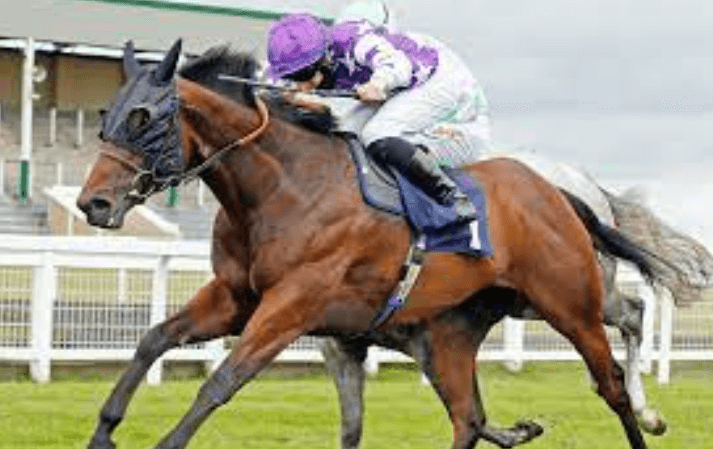In horse racing, you may have noticed some horses sporting a special piece of equipment covering part of their eyes: blinkers. These devices are not just for show—they serve a specific purpose in enhancing a horse’s focus, performance, and safety. Understanding why horses wear blinkers can help fans, bettors, and enthusiasts appreciate the strategy behind race preparation.
This article explores the function, types, and benefits of blinkers in horse racing.
1. What Are Blinkers?
Blinkers are cups or hoods fitted over a horse’s eyes, leaving the horse’s forward vision open while restricting peripheral or rearward vision. They are designed to:
- Limit distractions from surroundings
- Encourage the horse to focus straight ahead
- Improve concentration during training and races
By controlling what a horse sees, blinkers can enhance attention and performance on the track.
2. Why Horses Need Blinkers
Horses are naturally alert and easily distracted:
- Track Crowds and Noise: Spectators, cameras, and other horses can divert attention.
- Competition Anxiety: Some horses get nervous when they see rivals approaching from the side.
- Spooking: Sudden movement or objects in the peripheral vision can startle horses.
Blinkers help the horse stay calm, focused, and maintain a straight path, reducing the risk of errors and collisions.
See also: The Art of Racehorse Pedigree: Understanding Bloodlines
3. Types of Blinkers
There are several types of blinkers, depending on the horse’s needs:
- Full Cup Blinkers: Completely block side and rear vision, keeping the horse focused straight ahead.
- Half Cup Blinkers: Partially restrict peripheral vision, allowing some awareness of surroundings.
- French Blinkers: Cover the sides but have cut-outs or see-through sections for limited peripheral vision.
- Blinders with Sheepskin or Tassels: Reduce distractions from crowd or track-side activity.
Trainers choose blinkers based on a horse’s temperament, racing experience, and behavioral tendencies.
4. Benefits of Wearing Blinkers
Blinkers can provide tangible performance and safety advantages:
- Improved Focus: Encourages the horse to concentrate on running forward rather than looking around.
- Enhanced Speed: Focused horses are more likely to maintain pace and accelerate effectively.
- Reduced Anxiety: Limiting distractions calms nervous or excitable horses.
- Better Safety: Prevents sudden sideways movements that could cause falls or collisions.
For many racehorses, blinkers are the difference between a good run and a winning performance.
5. When Blinkers Are Used
Not all horses wear blinkers in every race. Trainers decide based on:
- Previous Race Behavior: Horses that veer, shy, or lose focus may benefit.
- Training Observations: Horses showing distractions or nervousness during workouts might be fitted with blinkers.
- Track Conditions and Competition: Horses running in crowded fields or noisy venues may perform better with restricted vision.
Blinkers are a strategic tool, not a mandatory piece of equipment.
6. Famous Examples of Blinkered Horses
Many champions have worn blinkers with success:
- Zenyatta: Often raced without full blinkers but sometimes used partial hoods to maintain focus.
- American Pharoah: Benefited from specialized headgear to manage excitement and maintain concentration.
- Secretariat: Trainers occasionally used blinkers in practice sessions to improve forward focus.
These examples highlight how judicious use of blinkers can enhance elite performance.
Conclusion
Blinkers are more than just accessories—they are a vital tool in horse racing that enhances focus, reduces distractions, and can significantly improve performance. By understanding why horses wear blinkers, fans gain insight into the strategic decisions made by trainers and jockeys.
In essence, blinkers help a horse channel its energy, maintain composure, and give its best possible performance on race day, making them a key component of race strategy and equine management.
